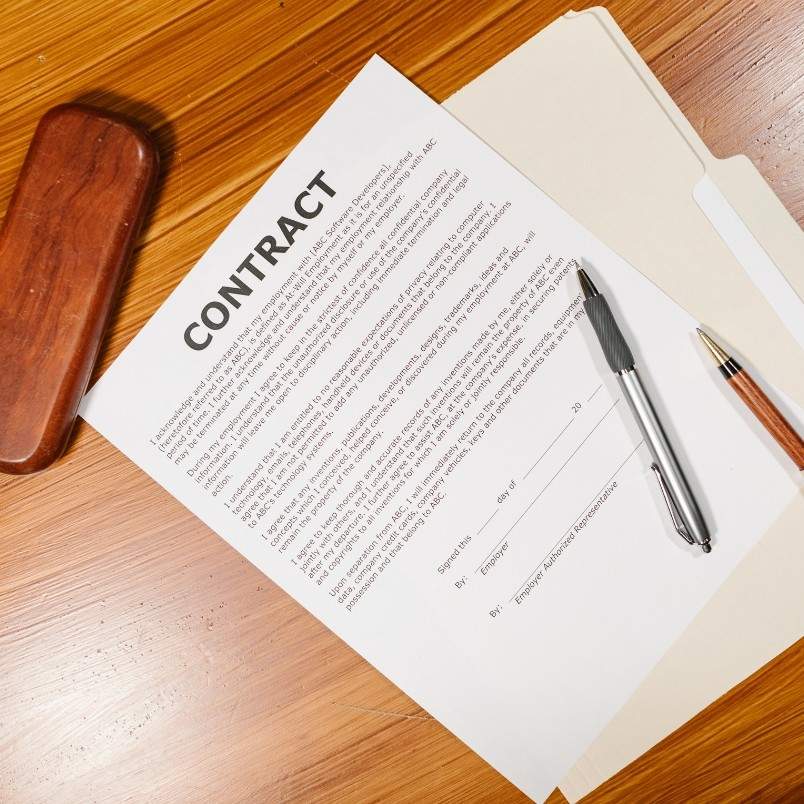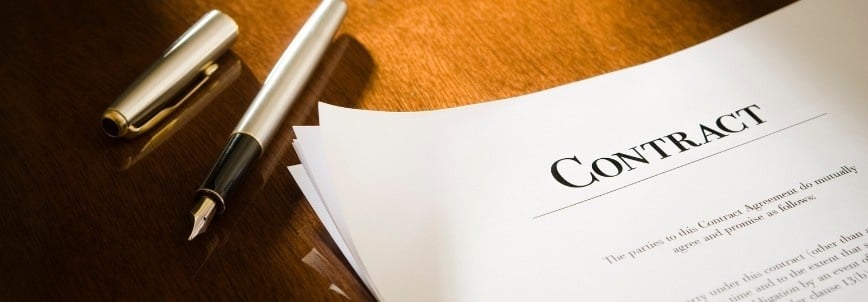The Ultimate Guide to Contract Management: Steps, Tips, and Best Practices
By Alvin Villanueva, PMP; Editor: Geram Lompon; Reviewed by: Grace Payumo, PMP
Managing contracts can often feel like navigating a maze. Between tight deadlines, complex terms, and the pressure of ensuring every detail is met, it’s easy to feel overwhelmed. One mistake can lead to costly delays, missed obligations, or worse—legal issues that could derail the entire project. But what if you could confidently approach contract management, avoiding the common pitfalls that many project and contract managers often face?
Imagine having a transparent, organized contracting process that guides you from start to finish—ensuring that each contract is executed efficiently and every expectation is met. With the right approach, you can take control of the contract administration process, eliminate the stress, and foster stronger relationships with contractors and clients. By leveraging contract management, you’re not just protecting yourself from risk—you’re setting your project up for long-term success.
Now is the time to take the first step toward becoming a contract management pro. In this guide, you’ll discover a simple, step-by-step process that will make managing contracts more straightforward and efficient, leading to better outcomes for you and your team.

What is Contract Management? Everything You Need to Know
Contract management is like being the project’s personal organizer—it’s all about ensuring things run smoothly from when the contract is signed to when it’s time to wrap things up (Cohn & Cockburn, 2022). It’s not just about crossing off deadlines or checking boxes—it’s about keeping everyone happy, keeping promises, and solving problems when they pop up (Kloppenborg & Petrick, 2020). Once the contract is in place, it’s time to keep everything on track, tweak things as needed, and prepare for renewals when it comes (Bennett & Hannan, 2021). It’s an ongoing process, ensuring the project stays on course without hiccups (Cohn & Cockburn, 2022).
Reasons Why Understanding Contract Management is Essential for Success
You might wonder, “Why should I care about contract management?” Imagine signing a deal and suddenly discovering that important terms were missed or deadlines were blown. Yikes! Understanding contract management can save you from those headaches, ensuring everything stays smooth, and your project stays on track. Knowing how to handle contracts effectively can make a difference whether you’re managing vendors, contractors, or internal teams.
Here’s why contract management is something you want in your toolkit:
- Avoid Costly Mistakes: Small oversights in contracts can lead to big problems, like unexpected costs or missed deadlines.
- Keep Everyone on the Same Page : Clear communication and managed expectations help everyone involved stay aligned with the goals.
- Improve Relationships: Good contract management builds trust with partners, contractors, and clients by showing you’re on top.
- Stay Compliant: Proper oversight ensures all terms and conditions are met, keeping you out of legal trouble.
- Boost Efficiency: A smooth process means less time wasted and more time focused on the bigger picture.
Let’s get to the fun part—managing contracts like a pro. With the proper methods, you can breeze through the contract lifecycle, keep everything organized, and avoid those nasty surprises. Trust me, this is the approach you need from a dedicated contract manager!

Step-by-Step Guide to dominating Contract Management
Managing contracts may sound like a big task, but with the right process in place, it’s all about staying organized and on top of things. Following these simple steps, you can keep your contracts in check and ensure your project runs smoothly. Whether you’re a seasoned pro or a contract management newcomer, these best practices will guide you through every stage with confidence and clarity.
Steps to Ace Contract Management:
- Plan the Contract
Before you sign the contract, clarify the needs, goals, and risks. Know what you’re working with! - Draft the Contract
It’s time to put pen to paper (or fingers to keyboard). This is where you’ll write down the terms, conditions, and all the fine details. - Get Approval
Before you move forward, ensure all key stakeholders are on board, and the contract is ready for finalization. - Negotiate Terms
This step is about hashing out the details to ensure everyone’s happy with the terms. - Sign the Contract
It’s time to make it official. Get all the signatures (or e-signatures) and lock it in. - Review and Revise
Remember to check in regularly, revise as needed, and keep track of any amendments or adjustments. - Renew or Close
Assess whether it’s time to renew or wrap up as the contract ends. This is when you check if all the goals were met and decide on the next steps.

Step 1: Planning the Contract
Before drafting any contract, it’s essential to take a step back and plan everything out. Planning helps you identify the organization’s needs, the project’s goals, and any potential risks that could arise. This is where you decide what type of contract is needed, who’s responsible for what, and what resources you’ll need to make it happen.
To execute this step:
- Identify the needs and expectations of both parties.
- Set clear, realistic goals and timelines for the project.
- Evaluate potential risks and create strategies to address them.
- Determine the roles and responsibilities of everyone involved.
Planning is critical because it ensures that you don’t jump into the contract blindly. It also sets you up for success by aligning expectations and helping you foresee potential obstacles.

Step 2: Drafting the Contract
Once the planning phase is done, it’s time to put everything into action by drafting the contract. This is where you take all the information and contract data you’ve gathered and begin putting it into writing. Clarity is key—every term, condition, and obligation must be well-defined to avoid confusion or future conflicts. Don’t forget to include payment terms, deadlines, and other important clauses. And remember, this is your chance to make sure everything is in place, so take your time and get it right.
To execute this step:
- Write clear and concise terms covering all relevant aspects of the agreement.
- Double-check legal requirements and make sure the contract complies with laws and regulations.
- Consult with legal experts to ensure all key clauses are included if necessary.
Drafting is essential because it transforms your plans into a formal document that guides both parties throughout the project. A well-drafted contract is your tool for preventing misunderstandings and legal issues.

Step 3: Getting Approval
Now that your contract is drafted, it’s time for approval. This is where you get feedback from all the key stakeholders and decision-makers. Approval ensures everyone is on the same page and that the contract aligns with the organization’s policies and expectations. This step is crucial because even the tiniest oversight could result in delays or misunderstandings.
To execute this step:
- Share the draft with all key decision-makers for their review.
- Collect feedback and make any necessary revisions to the contract.
- Before moving forward, everyone is clear on their roles, responsibilities, and expectations.
Approval is vital because it provides a final check to ensure everything is in order before proceeding. It’s your safeguard, ensuring you haven’t missed any critical details or requirements.

Step 4: Negotiating Terms
Now comes the exciting part—the contract negotiation. This is where all parties come to the table to discuss the contract terms and ensure everyone is on the same page. Negotiating can feel like a balancing act, where you work together to find common ground while meeting your needs. A successful negotiation leads to a contract that benefits both sides and sets the stage for a smooth partnership.
To execute this step:
- Research the other party’s needs so you know what’s important to them.
- Be open to adjustments, but stay firm on your non-negotiables.
- Ensure that all key aspects of the contract, such as payment terms and deadlines, are agreed upon.
- Use collaborative tools (like real-time editing) to avoid confusion and ensure everyone is on the same page. Tools like Google Docs, Microsoft 365, and contract management software (DocuSign or PandaDoc) allow for seamless collaboration, where everyone can contribute, suggest edits, and track changes.
Negotiating is essential because it ensures both sides are satisfied with the terms. A mutually beneficial contract is the key to a lasting relationship, and this stage helps prevent any potential conflicts down the road.

Step 5: Signing the Contract
Once both parties have agreed to the terms, it’s time to seal the deal! Signing the contract is the final step in making the agreement official. While we often picture a handshake or a face-to-face meeting to sign the contract, e-signatures have become just as valid in today’s digital age. Once the wet or electronic signatures are in place, the contract is legally binding, and both sides are committed to following through with what’s been agreed upon.
To execute this step:
- Double-check that all terms are correct before signing.
- If using digital tools, ensure that the e-signatures are from authorized representatives.
- Have a system to store the signed contract securely for future reference.
The importance of this step is simple: it turns the agreement into a contract, a legally enforceable document. Once signed, the contract becomes the foundation for accountability, ensuring both parties fulfill their obligations.

Step 6: Reviewing and Revising the Contract
As things progress, you may find that certain aspects of the contract need revisiting. Contracts aren’t set in stone; they can be amended or revised as the project evolves. This step is about staying flexible and ensuring the contract remains relevant and practical as circumstances change.
To execute this step:
- Regularly review the contract throughout the project’s lifecycle.
- If changes need to be made, document the revisions and get mutual agreement on any amendments.
- Keep track of all revisions to avoid confusion later.
Reviewing and revising are essential in keeping the contract repository aligned as things change. A contract that evolves with the project’s needs ensures that it remains a valuable tool throughout the entire process. Following a formal change control process for contract modifications is critical to maintaining clarity and agreement among all parties involved (Project Management Institute, 2021).

Step 7: Renewing or Closing the Contract
Finally, when the contract ends, it’s time to take stock. Has the project been completed successfully? Were all contractual obligations met? At this point, you either decide to renew the contract or close it out. If it’s a long-term project, renewing ensures the continuation of the partnership. If the project is completed, closing the contract means all loose ends are tied up, and all goals have been achieved.
To execute this step:
- Review the contract’s terms and check if all deliverables have been met.
- Start the process early to avoid interruptions if the contract needs to be renewed.
- If the contract ends, ensure that all outstanding issues are resolved and both parties are satisfied.
This step is crucial because it helps you wrap up the contract responsibly and clearly. Whether you’re making new contracts, renewing for continued work, or closing the agreement, everything is settled, and everyone walks away with successful contract management.

Key Factors to Ensure Success in Contract Management
While the steps we’ve covered lay a solid foundation, a few key considerations can make all the difference in the success of your contract management activities. First, always remember that clear communication is essential throughout the contract lifecycle. Even after the contract is signed, staying in touch with all parties ensures that everyone is on track and that any issues are addressed quickly.
Another critical factor is keeping everything organized. Contracts can involve numerous documents, revisions, and updates. Using a contract management system or software keeps things streamlined and ensures you can quickly access the most up-to-date contract version, preventing any confusion or mistakes.
Don’t forget about post-signature follow-ups. Monitoring milestones, renewals, or compliance requirements helps maintain the contract’s relevance throughout the project and ensures everything runs properly.
Additionally, integrating contract management with other

Taking Contract Management to the Next Level: How to Enhance Your Process
Now that you’ve understood the basics of contract management, it’s time to take things to the next level. One way to elevate your process is by incorporating a contract lifecycle management software (CLM). CLM tools automate and streamline everything from contract creation to renewal, giving you greater visibility and control over your contracts. By leveraging technology, you can reduce errors, save time, and make the entire process more efficient, allowing you to focus on the bigger picture (Gartner, 2021; McKinsey & Company, 2020).
Consider integrating data-driven insights into your contract management process. By tracking key metrics such as contract performance, cost savings, and compliance rates, you can identify trends and improvement opportunities. This data-driven approach strengthens your future contracts and helps build stronger, more strategic relationships with vendors, contractors, and clients.
Foster a culture of continuous improvement within your team. Review and refine your processes regularly to stay up-to-date with industry best practices. Train your team on the latest tools and techniques to ensure that your contract management process remains as effective and efficient as possible.

Beyond Traditional Contract Management: Innovative Alternatives You Should Know
While the method of automating contract management we discussed is effective, some alternatives can also streamline your contract management process. One option is using outsourced contract management services. Hiring a third-party service to manage your contracts can relieve your team of administrative burdens, allowing them to focus on other tasks. These services often come with experienced professionals who can handle everything from drafting to negotiation and may bring specialized knowledge to the table (KPMG, 2020).
Another alternative is using blockchain technology for contract management. Blockchain offers a secure, transparent way to manage contracts by recording all transactions in an immutable ledger. This can reduce the risk of fraud, streamline the signing process, and make tracking contract changes in real time more manageable. For organizations seeking cutting-edge contract management solutions, blockchain can provide added security and efficiency, especially in complex or high-risk contracts (Deloitte, 2021).
Some businesses prefer to go entirely paperless with digital contract management systems. Tools like Adobe Sign or HelloSign are great alternatives to traditional automated contract management systems. They enable digital signatures, automated workflows, and easy access to documents from anywhere. These systems simplify the process, reduce paperwork, and make it easier to maintain a digital archive of all contracts (Adobe, 2020; HelloSign, 2020).

Final Thoughts on Contract Management: Lessons from My Experience
So there you have it—your complete guide to managing contracts effectively and confidently. From planning and drafting to negotiating and finalizing, following these steps ensures you stay organized, meet deadlines, and avoid costly mistakes. Remember, good contract management is more than just paperwork; it’s about building strong relationships and ensuring all parties stay aligned throughout the negotiation process.
From my experience, having a solid understanding of contract management has been a game-changer. It’s a skill that can be applied across a wide range of industries, and it ensures smooth sailing for your projects. If you follow these steps, you’ll be able to handle complex contracts almost like a pro and build better, more successful partnerships along the way.
So, why listen to me? I’ve seen firsthand how effective contract management can make or break a project, and with the right approach, it can transform how you work with others. With these insights, you’re not just managing contracts—you’re setting the stage for successful, lasting partnerships that benefit everyone involved.

Important Key Takeaways for Effective Contract Management
- Planning is Crucial: Proper planning sets the foundation for a successful contract. By identifying needs, risks, and responsibilities upfront, you can avoid confusion later.
- Clarity is Key in Drafting: A well-drafted contract is precise and detailed. It prevents misunderstandings and sets expectations, protecting both parties.
- Approval and Negotiation Matter: Getting approval and negotiating the correct terms ensures that everyone is on the same page and that the contract benefits all involved.
- Contracts Evolve: Regular reviews and revisions are essential to keeping the contract relevant as the project progresses.
- Technological Tools Can Help: Using collaborative tools, contract management software, and blockchain can simplify and streamline the process, improving efficiency and reducing errors.
By following these key principles, you’ll be well on your way to leveraging contract management and building stronger, more effective relationships with contractors, vendors, and clients.

References
Adobe. (2020). Digital signature solutions for streamlining contract management. Adobe Inc.
https://www.adobe.com/solutions/e-signatures.html
Bennett, S., & Hannan, R. (2021). Contract management best practices: A guide to managing your contracts efficiently. Wiley.
Cohn, D., & Cockburn, D. (2022). Contract management for project success: A guide to managing the entire process. Harvard Business Press.
Deloitte. (2021). Blockchain technology in contract management: Enhancing transparency and reducing fraud. Deloitte Insights.
https://www.deloitte.com/blockchain-contracts
Gartner. (2021). Contract lifecycle management software: Market trends and best practices. Gartner, Inc.
https://www.gartner.com/en/newsroom/press-releases
HelloSign. (2020). Improving contract workflows with electronic signatures. HelloSign.
https://www.hellosign.com/
Kerzner, H. (2017). Project management: A systems approach to planning, scheduling, and controlling (12th ed.). Wiley.
Kloppenborg, T. J., & Petrick, J. A. (2020). The essentials of
McKinsey & Company. (2020). The future of contract management: Optimizing for efficiency and compliance. McKinsey & Company.
https://www.mckinsey.com/future-of-contract-management
PMI. (2021). The standard for
Project Management Institute. (2021). Contract management in
Turner, J. R. (2014). The handbook of project-based management (4th ed.). McGraw-Hill Education.

